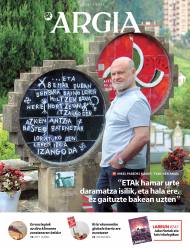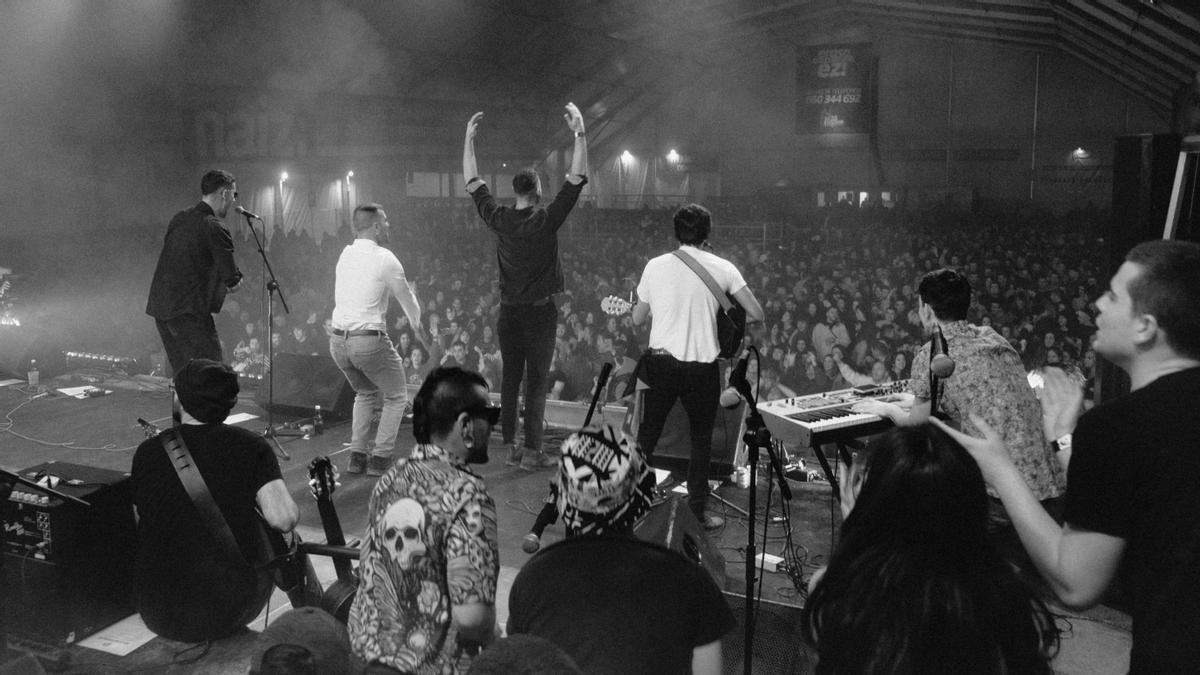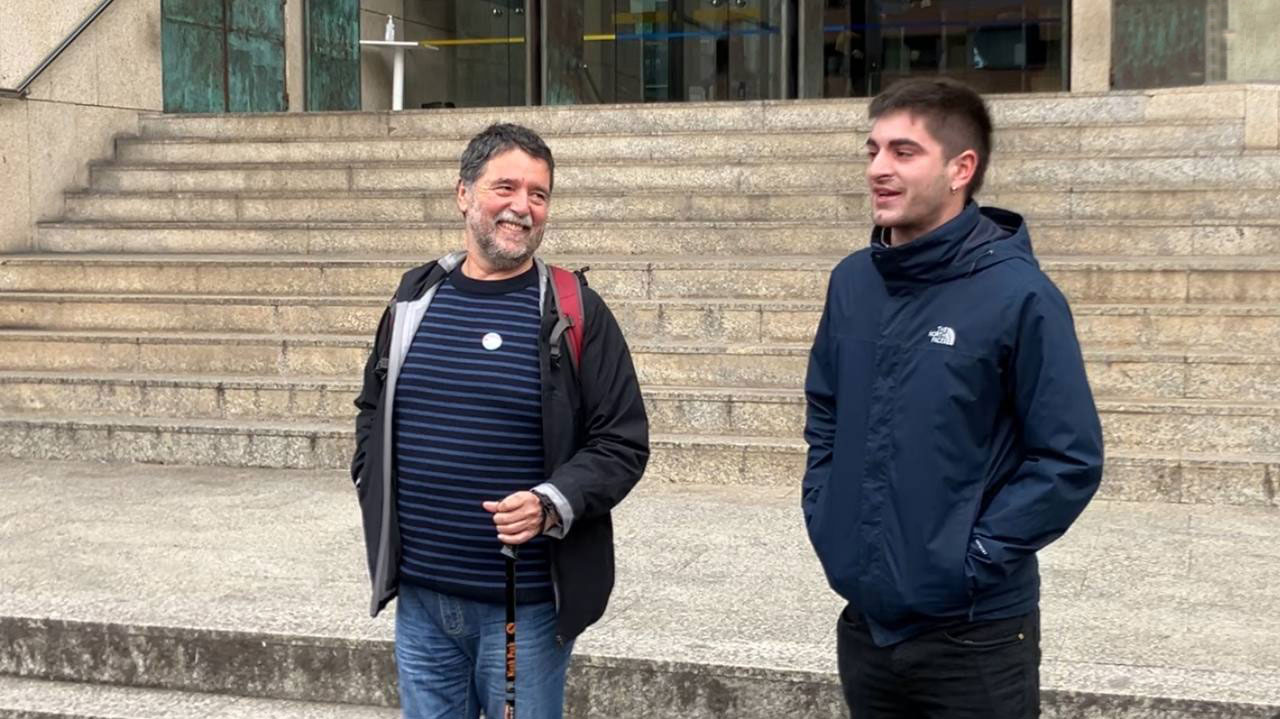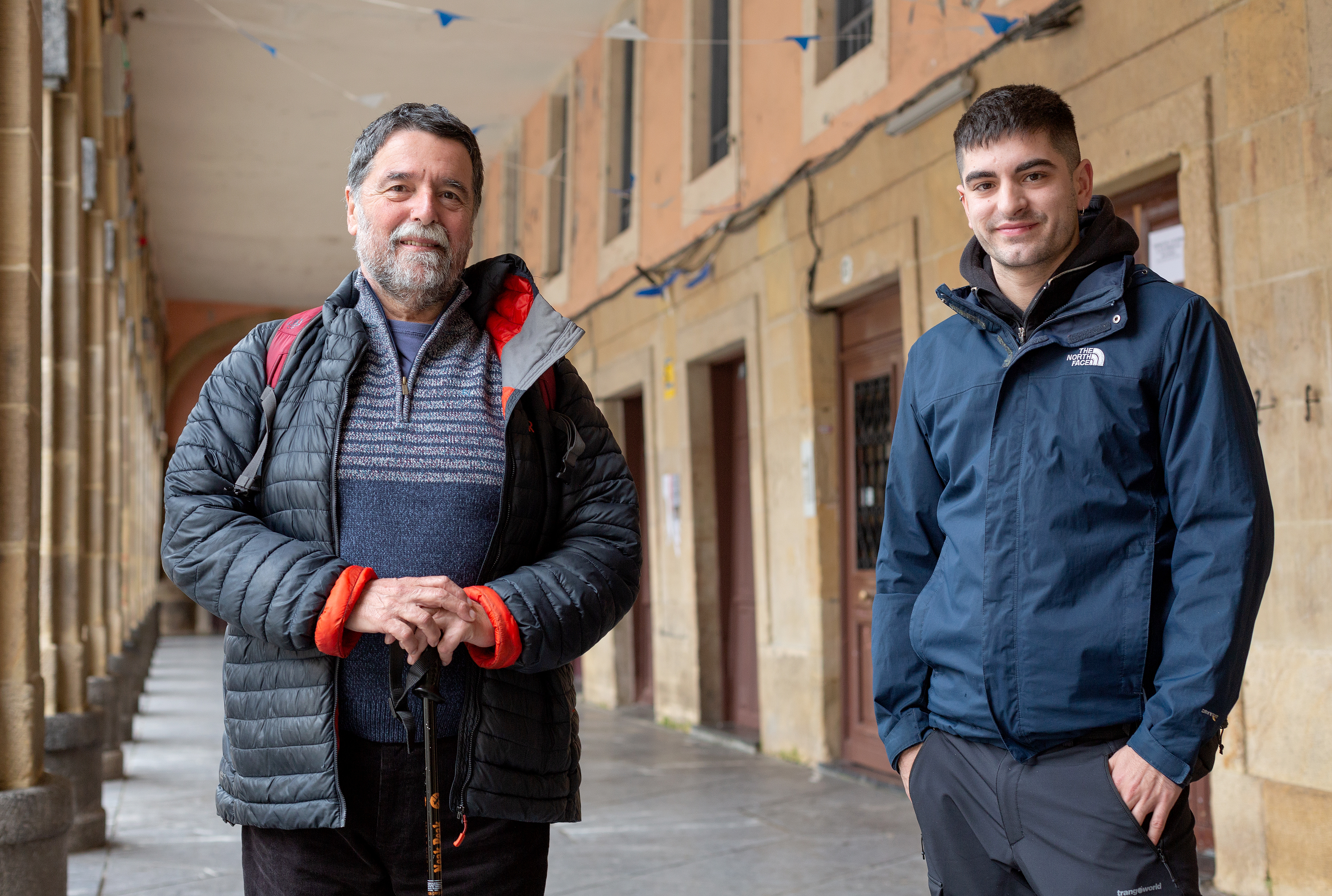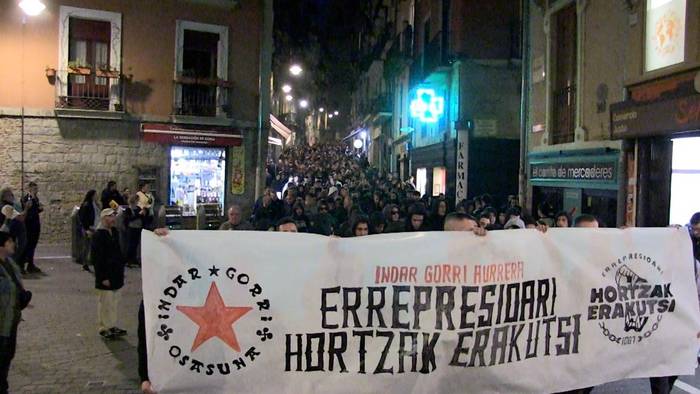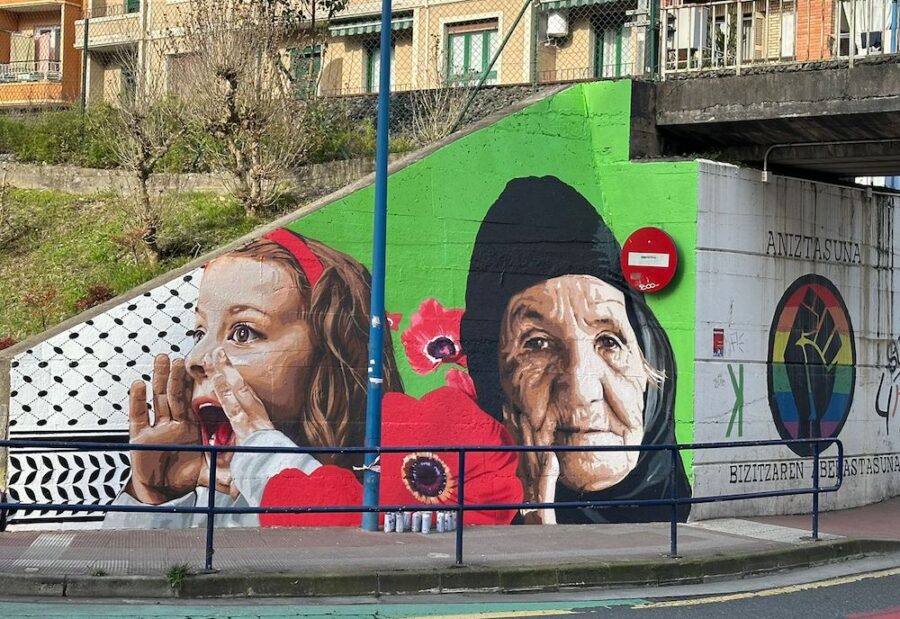The wall represents the cry of the people
- There is a wall in Euskal Herria, which in the last three years has been massively thickened with layers of paint. In half the brown, in the other half more colorful, has been used almost a hundred times by the citizenry to represent everything. Since February he has shown Zumaia Picasso’s Gernika. After three years of activity, the wall has given strength to the people. The Kalea Guztiona Da initiative has begun to bear fruit.

Today, August 29, Zumaia has painted over 98 murals on the walls of Ribera Street, where nearly 400 murals have been placed. Today many of its members have gathered in front of the wall, with the same smile and the same illusion as ever. They are not young, especially for age, but for action; with passion for work, with the aim of coloring the center of the village. Today, the wall of the Ribera will not be painted for 99 times, as the last image remains fixed and clear, unlike all the previous ones. Today the industrial furnace will be installed at almost 900 degrees, in order to hold a plate to the wall: The Txoko of Freedom of Expression.
Three years later, Picasso’s Gernika remains a reality, so the demand for freedom of expression has achieved a small victory in Zumaia, where the Kalea Guztiona Da initiative has gained legitimacy. With perseverance and patience, they use humor as a weapon of combat. “But we haven’t won yet,” said neighbor José Antonio Letamendia. He has not denied that great progress has been made, but he has underlined that much remains, since freedom of expression has not yet been guaranteed in the people.
“What we want from the outset is that the freedom of expression of citizenship is not at stake every time the City Hall changes,” said Aratz Zearreta, a member of Guztiona Da. The Abertzale coalition EH Bildu broke into the City Hall of Zumaia in the May elections, turning the government of the PNV and overcoming the votes of the Jeltzales with the biggest difference that has been seen in the town. Three years ago, in February 2016, a press release was issued stating that the city council approved an ordinance and was going to put it into effect. It was like this. “From now on, all signs and banners placed in the public spaces of the locality will be removed, whatever their content, message, origin or purpose.” Anyone wishing to place a poster or a banner must ask the Municipal Government for authorization, stating the exact content, size and time spent on the street.
Among the citizens who did not like the idea of the ordinance was José Antonio Letamendia: “Why does the City Hall tell me what I have to put in and what not?” Such doubts and concerns, among others, led to an open assembly in which dozens of citizens participated. The first meetings, as Letamendia remembers, were accompanied by questions such as what to do, how to do it or to whom to address. But there were fewer and fewer people coming together, until he suddenly came up with an image on the wall of the street in the Ribera. “The mural lasted two days and then only a few hours,” he laughs. Although these figures of walls were immediately erased, it was enough for the theme to be made known in the street: “Starting with us, many citizens did not understand why the mural was immediately erased, because it is not a painted one, nor something that offends anyone.”
Ordinance No Entry into force
“The truth is that they already had three years of legislature and at the first meeting we were also taught the draft,” explains Zearreta. The members of the Kalea Guztiona Da group expected that, after being born “under the threat” of the ordinance, it would be implemented without heeding the popular movement, and although they say “with surprise”, Zearreta and Letamendia claim that the municipal government has lacked “courage”.
They welcome the initiative that the usual popular movements do not usually have – rather than focusing on demonstrations and banners, their main activity has been the drawing of murals – as they have worked and shaped on the Ribera Wall any theme of creativity: “For example, we have not always made murals for Basque political prisoners, or we have simply worked on issues of the same line; that is, people would have catalogued us as ‘those of always’; for example, once we drew a duende with the textbooks, at Christmas we made a mural of watches, other times in favor of refugees, feminism, the incinerator or Gernika of Picasso.”
They consider that the City Council, faced with these types of initiatives, has been “lost”, without knowing where and how to address the issue. Constantly, almost every weekend, they have gathered citizens of all kinds in the street of the Ribera, in the center of Zumaia, with the help of concerts or other cultural events, encouraging the atmosphere between the pintxos and the tragedy while they painted the image of the wall day by day, which, according to their colleagues, “has done harm to the city council”. They ended the session, took a photo and went home with a smile, knowing that before dawn they would paint brown above. The mural photo, however, circulated on the net and everyone knew what the City Hall’s position was: trying to cut the wings to which they fly.
“We were strengthened by the City Hall’s censuring attitude; we asked for a participatory process to discuss freedom of expression on the street, and they, obstinate, simply eliminated what we had done, as if nothing had happened,” says Zearreta. However, he explained that some of the murals had more impact than others, as the image they made him when the musician Imanol Urbieta died, for example, the elimination for the next day, like the other murals, did not favor many people for not giving importance to the message. Nor is the immediate elimination of the mural that denounced the situation of drowned immigrants in the Mediterranean Sea.
-4.jpg)
During these three years they have made all kinds of paintings, becoming a wall where messages of different types can be expressed. There were also figures of insignificant walls, which once painted everything in garnet and which the City Hall also covered in brown within a few hours. All these murals have been collected and sold in an annual calendar, both in the locality and at the Durango Fair. They have pointed out that the strength of these sales has been enormous and, therefore, they have felt “obliged” to paint: “In two years we have sold some 1,500 calendars that have been our source of funding; we have noticed that the struggle has gone beyond Zumaia and that people have been aware of what we were doing.”
So they got to mural number 98. So it was February. The parties had in mind the elections in May; they took advantage of the moment and introduced the motion in the City Hall of Zumaia, claiming once again that they wanted to open a participatory process. A few days after the introduction of the motion, the mural was painted, which can still be seen. For the first time, the municipal government did not dare to cover up.
“A new stage starts”
Letamendia and Zearreta claim that the struggle is not over. Since August 29, the plaza in front of the Ribera Wall has become the Corner of Freedom of Expression, but they say that celebration is not a triumph, because there is still "something that should be written". To do so, the members of Kalea Guztiona Da are aiming to reach this point. “Whoever places a banner is responsible for the banner, the content that is made in it; if I insult you, you denounce me”: Letamendia says that he understands freedom of expression, but what they are clear is that, from the moment it is a fundamental right, it is essential that the city council and the people reach an agreement on some points and that everything agreed is contained in an ordinance.
Apparently, the current municipal government of EH Bildu will not cover the image of the 98 brown wall, or it does not seem that elimination is a priority in this legislature, while the beginning of the participatory process is, as Letamendia and Zearreta have made it known that the city council has already launched it. In any case, they have both expressed their desire to continue to use the wall, although they have not required anything new. How, however, you have to talk to other popular movements. “Every month the idea of a movement doing something was on the table, but apparently it is not going to go ahead; among all will be decided what to do, because it belongs to everyone,” says Letamendia.
“If something has characterized this struggle, that has been a constancy; we would not have achieved what we had achieved if we had made ten murals and left them”, says Zearreta. But on the occasion of the celebrations, Letamendia is committed to the participatory process. In fact, if the Freedom Txoko is coloring again, it seems that it is not because the municipal cleaners have dyed it brown, but because freedom of expression has been granted to the people. The embodiment of ideas on the wall for three years and weekend has served to claim that the street belongs to all and to gain legitimacy before the powerful.
Steilas considers out of place the effort of the Rectorate of the UPV/EHU to prevent the participation of a person through a communication at the congress on Sovereignty(s) held recently in our university. We do not understand the attempt to obstruct the academic activity of a... [+]









